Importance of Theory in Fashion Design

Fashion theory is the study of ideas, principles and concepts that guide clothing and design. It explains why people dress in a certain way, how culture shapes fashion and how designers use these ideas to create meaningful work. In simple words, fashion theory is like the backbone of
fashion design. It helps designers understand not just how to make clothes, but also why those clothes matter.
Think of it this way. A student learning stitching can make a kurta by following steps. But when the same student learns theory, they begin to see why certain colours connect with
festivals, why certain cuts look flattering on the Indian body type or why some fabrics feel more appropriate for summer in Kerala and others for winter in Delhi. This deeper understanding turns skill into design. The purpose of fashion theory is to connect the technical side of fashion, like sewing and pattern making, with the conceptual side, like culture, psychology and social meaning. It acts as a bridge between practical skills and creative thinking, ensuring that fashion is not only wearable but also meaningful. Without theory, fashion remains only craft. With theory, it becomes design.
The Pillars of Fashion Theory Every Designer Must Know
Fashion theory rests on a few key pillars that guide every creative choice, from sketching an idea to bringing it to life. These pillars help designers understand not just how clothes look, but why people wear them and how they connect with culture.
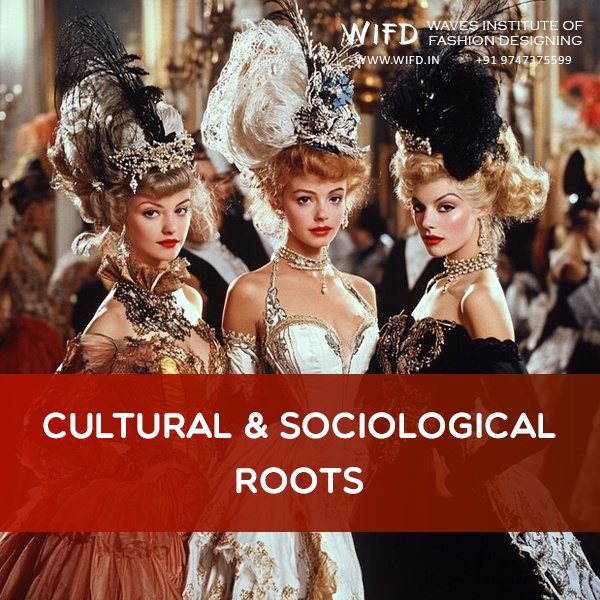
Cultural and Sociological Roots
Fashion is never just about fabric. It reflects identity, traditions and social meanings. Semiotics, the study of signs and symbols, plays a big role here. For example, a simple bindi, a turban or a white kurta can carry cultural messages that people immediately recognise. Designers use this knowledge to create garments that speak to communities, express identity or even challenge norms.

Power of Colour Psychology
Colours set the mood. Red is often linked with celebration in Indian
weddings, while white can suggest purity or mourning, depending on the context. A designer who understands colour psychology can control the emotions a garment brings out, whether it is excitement, calm or elegance.

Principles of Design
Every outfit must feel complete and pleasing to the eye. This balance comes from the basics of design:
- Unity - All elements of the outfit should feel like they belong together.
- Proportion - The size of sleeves, collars and hems should look right with the rest of the garment.
- Balance - Outfits can be symmetrical, like a sherwani or asymmetrical, like a saree drape, but both should still look stable and intentional.

Theories of Trends
Fashion never stays still. Theories explain how
trends move:
- Trickle-down - Trends start with elites and spread to the masses.
- Trickle-up - Street fashion inspires high-end designers.
- Trickle-across - Trends spread quickly across all groups at the same time.

Knowledge of Textiles
Fabric choice can make or break a design. Cotton breathes and drapes differently from silk. Khadi has a raw, earthy texture, while chiffon feels light and flowing. Knowing how
textiles behave allows designers to decide what is practical, comfortable and visually effective.
Historical & Cultural Foundations of Fashion Theory
Fashion theory builds on deep intellectual roots that connect philosophy, culture and design practice. Understanding these foundations helps explain why fashion is more than just
clothing.
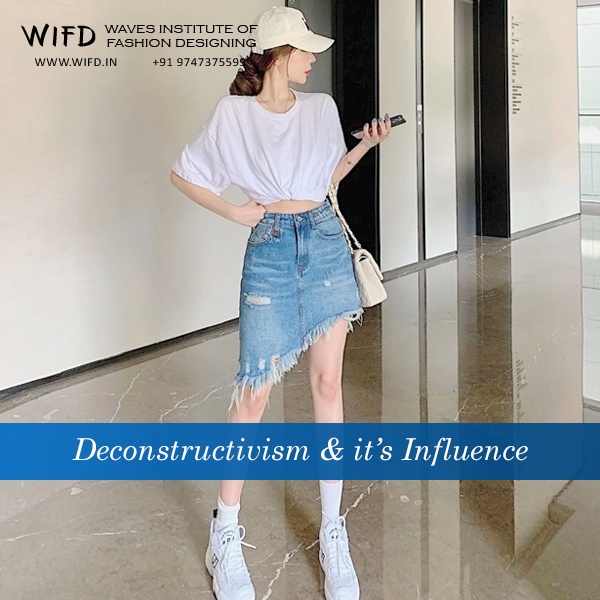
Deconstructivism and its Influence
Deconstructivism, a concept from
French philosopher Jacques Derrida, challenged the idea of fixed meanings. In fashion, this translated into designs that broke traditional rules of structure and form. Designers such as Martin Margiela and Rei Kawakubo used this approach to question beauty, symmetry and order. Torn seams, unfinished hems and asymmetry became tools to make people think differently about fashion.
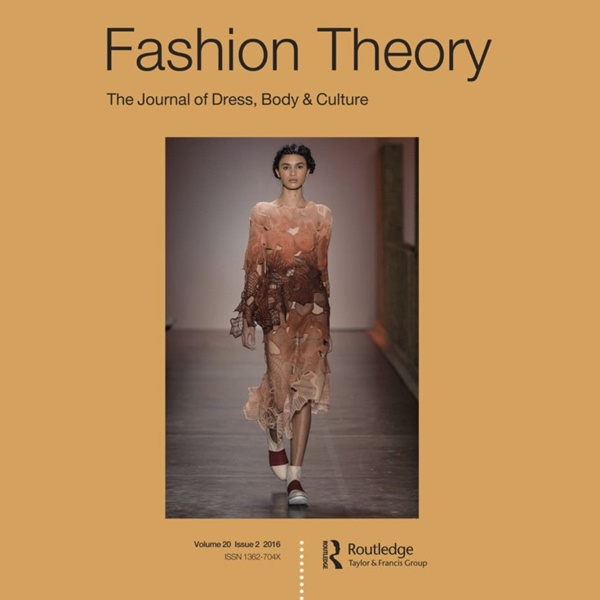
Academic Journals and Fashion Discourse
Academic journals play a key role in shaping fashion theory. Publications such as Fashion Theory: The Journal of Dress, Body & Culture provide a platform where scholars and practitioners discuss ideas like gender, identity and consumer culture. These writings help fashion students and professionals in India and abroad see fashion not just as trends but as a cultural and intellectual field.

Bridging Academic and Commercial Design
Theory often begins in classrooms and journals, but it influences the commercial world too. Fashion schools in India, like NIFT, introduce students to critical theory alongside practical design. This knowledge helps upcoming designers create collections that balance creativity with market needs. Commercial brands also borrow ideas from academic research, especially in areas like sustainability, consumer psychology and cultural symbolism.
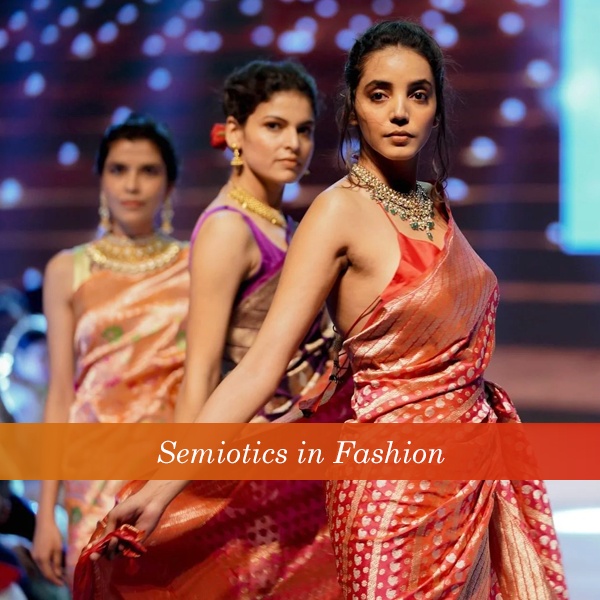
Semiotics in Fashion
Semiotics, the study of signs and symbols, explains how clothing carries meaning. A saree, for instance, is not only fabric but also a marker of tradition, regional identity and social values. In
modern fashion, designers use symbols to send messages about luxury, rebellion or belonging. Understanding these signs allows both designers and consumers to see fashion as a language that communicates ideas without words.
Why Fashion Students Benefit from Theory
Fashion theory gives students more than just design knowledge. It sharpens the way they think and plan, which directly improves their work.
- Clear Thinking and Better Expression - Students learn to think critically about clothes and style, not just create them. They start asking why a design works and how it connects to culture or society. This helps them explain their ideas with confidence, whether in a classroom presentation or while working with a client.
- Understanding What Makes Design Meaningful - A design is not only about fabric and stitching. Theory helps students see the story, symbolism and purpose behind clothing. For example, they begin to notice how traditional Indian textiles like khadi or ikkat carry cultural value. This awareness makes their designs richer and more relevant.
- Smarter Planning in Design Work - With theoretical knowledge, students plan their collections in a more structured way. They learn how to research, build concepts and connect them to practical details like colour choices, fabric selection and target customers. This reduces trial and error and saves both time and cost.
- Forecasting and Sustainability Awareness - Theory also trains students to study trends and predict what people may want in the future. Alongside this, it creates awareness about sustainability. They understand why eco-friendly fabrics, natural dyes and recycling matter in today's fashion market. In a country like India, where sustainable fashion is gaining demand, this knowledge gives them a strong edge.
Practical Applications of Fashion Theory
Fashion theory is not limited to classrooms or books. Designers apply it every day to create collections, communicate ideas and respond to culture in a meaningful way.

- Forecasting in Capsule Collections - When a designer plans a capsule collection, theory helps them predict what people may want to wear in the coming season. Trend forecasting techniques allow them to study colours, fabrics and silhouettes that are gaining attention. For example, by observing consumer choices in India's urban markets, a designer may decide to include earthy tones, breathable fabrics and multi-use garments that fit both work and casual settings. Theory gives the structure behind these decisions, so the collection feels fresh yet practical.
- Communicating Ideas with Frameworks - A collection is not only about clothes. It is about a story or a concept. Designers use theoretical frameworks such as identity, gender or minimalism to express their vision clearly. This helps them communicate with buyers, fashion media and even customers. Without a strong theoretical base, the collection may look good but fail to connect at a deeper level.
- Reading Cultural Signals through Semiotics - Fashion is full of signs and symbols. Semiotics, a branch of theory, helps designers understand what these signs mean in society. For instance, using khadi fabric may symbolise simplicity and pride in Indian heritage. A particular print or colour may carry regional significance. By studying these cultural signals, designers avoid misrepresentation and create work that resonates with the audience.
Case Study - Theory Brand and Sustainability
The
global fashion label '
Theory' shows how theory can guide business decisions. The brand applies sustainability concepts by choosing
eco-friendly fabrics, ensuring transparent supply chains and promoting mindful consumption. This approach is not random; it comes from fashion theory that studies the link between design, society and environment. It proves that theory is not only academic but also a tool for responsible and successful fashion practice.
In short, theory becomes practical when designers use it to forecast trends, shape concepts, decode cultural meaning and build sustainable practices. It turns creativity into thoughtful fashion that serves both people and the planet.
Education in Fashion Design: Blending Theory with Practice
A strong fashion design education does not rely only on sketches and
sewing. It grows best when theory and practice come together in the classroom. A balanced curriculum gives equal weight to both. Students learn the concepts behind clothing, such as history, culture, psychology of colour and consumer behaviour, while also spending time in studios creating garments. This mix helps them understand not just how to make clothes but why designs connect with people.
Colleges often include projects that test both sides. Semiotics projects train students to decode signs and symbols in fashion. Deconstruction tasks push them to rethink existing garments and rebuild them with new meaning. Forecasting projects teach them how to study trends, fabrics and global markets to predict what people may want in the future. Each activity brings theory alive in a hands-on way.
The outcome of this approach is clear. Designers who train with both knowledge and skill become more adaptable. They can move between traditional crafts and modern digital design with ease. They read fashion as a language and respond quickly to changes in consumer taste. This balance ensures they step into the industry not just as creators but as
problem solvers ready for the real world.
Emerging Theoretical Trends in Fashion Design
Fashion design is no longer guided only by
colours, cuts and fabrics. New theories are shaping the way designers think, create and connect with society. Three important directions are gaining ground today.

Tech-driven theory: AI in trend diffusion
Artificial intelligence is changing how trends spread. Designers and brands use AI to study millions of images, social media posts and shopping patterns. This helps them predict what people in India and across the world might like next season. Instead of waiting for fashion shows or magazines, AI can pick up signals quickly, such as a rising interest in a fabric or silhouette. This theory sees fashion as a flow of digital data, where technology speeds up the process of diffusion from runways to streetwear.
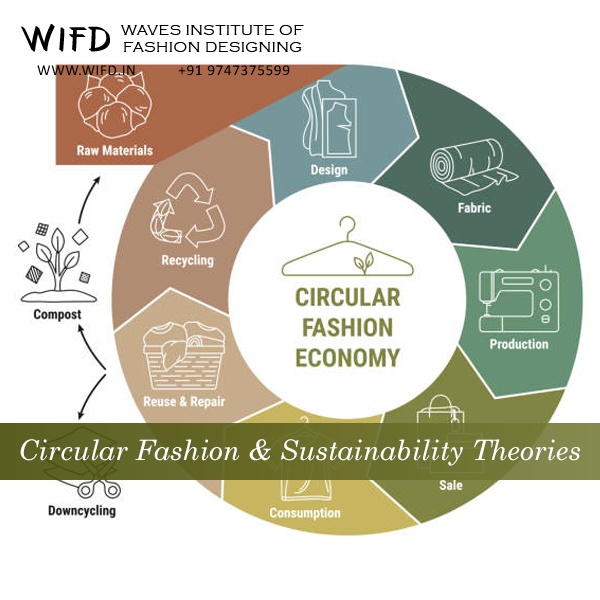
Circular Fashion & Sustainability
The idea of circular fashion is now central to design thinking. It looks at clothing not as a disposable product but as part of a cycle. Materials are reused, recycled or designed for long life. Theories of sustainability guide students and professionals to choose natural fabrics, promote repair and upcycling and reduce waste at every stage. In India, where cotton and handloom traditions are strong, this approach blends well with local practices and encourages affordable,
eco-friendly fashion.
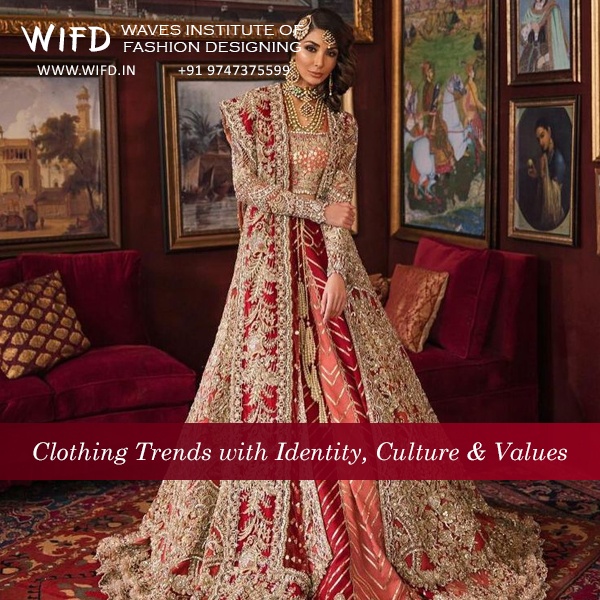
Fashion philosophy restoring meaning to dress
A new wave of fashion philosophy focuses on giving dress a deeper meaning. It argues that clothing is not just about trends but also about identity, culture and values. Designers draw inspiration from heritage crafts, community stories and social movements. By doing so, they create garments that speak of belonging and self-expression rather than only surface style. This theory restores dignity to what people wear and reminds the
industry that fashion connects directly with human life.
Now you see the practical value of fashion theory in India. Theory sharpens your design choices - from selecting breathable khadi for summer to blending cultural motifs into modern silhouettes. It deepens your understanding of fabric, fit and function in our diverse climates and traditions. Embracing theory equips you to design garments that look good and feel rooted in meaning. You start creating clothes that resonate with real peoplestudents, shoppers, clients across India. Theory doesn't just inform your hands-it guides your vision.
FAQ about Importance of Fashion Design Theory
1. How can a small boutique in India use fashion theory?
By planning a theme that
suits local buyers, like festive wear or office wear and keeping colours and styles consistent. It helps reduce risk and improve sales.
2. What should I show in my
portfolio to prove I know fashion theory?
Add mood boards, research notes, sketches, fabric choices and a short write-up explaining your design idea and target customer.
3. Can I learn fashion theory in India without a full degree?
Yes. Many institutes offer short courses and workshops. Online classes, museum visits and reading fashion books also help.
4. How do I research cultural symbols before using them in design?
Talk to artisans, check books and museum records and avoid using sacred symbols for casual fashion. Always give credit if you use community designs.
5. Can theory guide a small brand towards sustainability?
Yes. It helps in choosing durable fabrics, planning small collections and telling buyers why your clothes are eco-friendly.
6. Which careers in India need strong knowledge of fashion theory?
Fashion design, trend forecasting, buying, merchandising, teaching, research and work with craft NGOs all value theory.
7. How do I adapt western fashion theories to India?
Adjust them to Indian weather, body types and festival seasons. For example, plan around monsoons and Diwali instead of western calendars.
8. How can I study fashion theory on my own?
Read about Indian designers and textiles, visit crafts and museums, keep a sketchbook and try short internships with local brands.
9. How can colleges balance theory and practice in short courses?
Link each theory lesson with a small design project, industry brief or field visit so students learn by doing.















 CONTACT USWaves Institute of Fashion Designing,
CONTACT USWaves Institute of Fashion Designing,